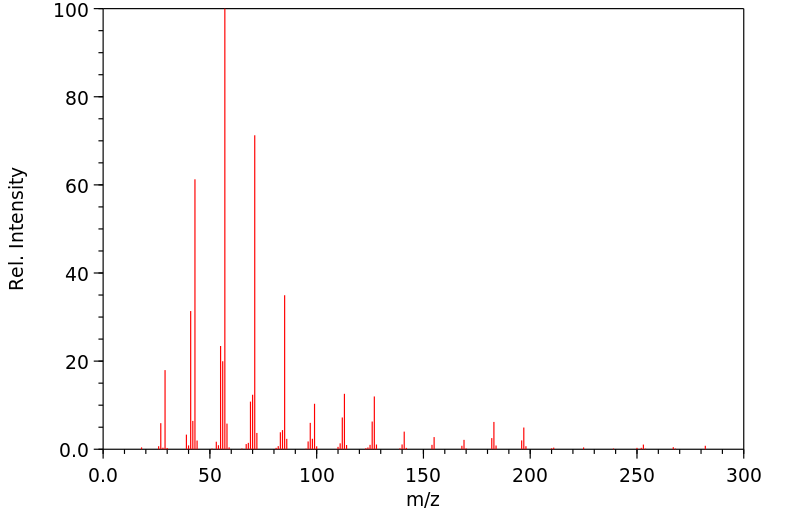代谢
大鼠能够将2,6,10,14-四甲基十六烷(植烷)从肠道完整地吸收到淋巴中。体外实验表明,肠道微生物似乎无法代谢植烷。大鼠将植烷代谢为(a)一种三级醇,暂定为2,6,10,14-四甲基十六烷-2-醇,以及(b)多种短链酸,包括乙酸、异丁酸和2-甲基丁酸,这些酸通过尿液排出。即使在静脉注射植烷后,CO2也是一个非常少量的产物。在植烷降解过程中的类脂质中间体无法被检测到,这表明对分子的最初攻击是限速步骤。口服植烷后,尿液中会出现排泄产物,但静脉注射、腹腔注射或皮下给药后则不会。然而,无论是口服还是腹腔注射植烷,都会产生三级醇。
Rats absorb 2,6,10,14-tetramethylhexadecane (phytane) from the intestinal tract intact into the lymph. Intestinal microbes appeared to be unable to metabolize phytane in vitro. Rats metabolized phytane to (a) a tertiary alcohol tentatively identified as 2,6,10,14-tetramethylhexadecan-2-ol, and (b) a variety of short-chain acids which were excreted in the urine. These included acetic, isobutyric, and 2-methylbutyric acids. CO2 was a very minor product, even following intravenous injection of phytane. Lipoidal intermediates in the degradation of phytane could not be detected, suggesting that the initial attack on the molecule was rate-limiting. Urinary excretion products were apparent following oral but not intravenous, intraperitoneal, or subcutaneous administration of phytane. However, the tertiary alcohol was produced following both oral and intraperitoneal administration. ...
来源:Hazardous Substances Data Bank (HSDB)







